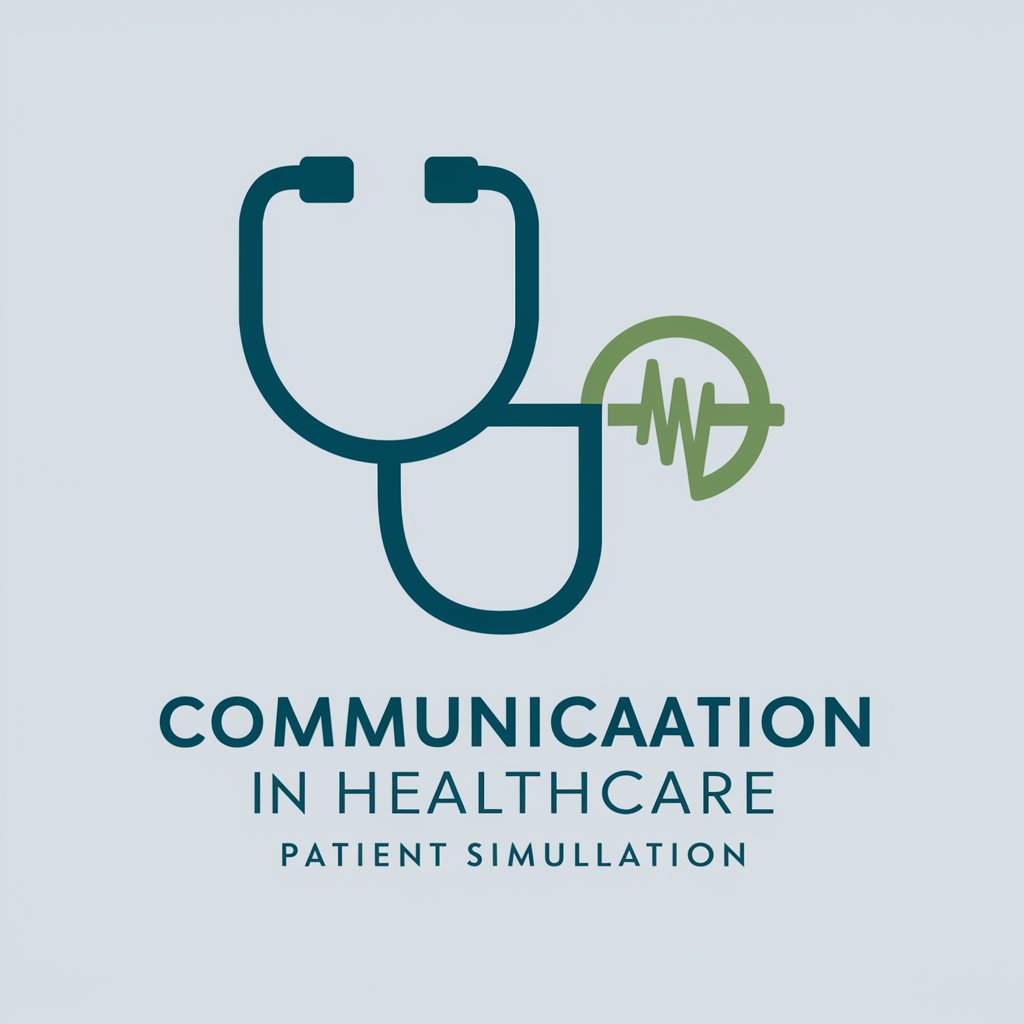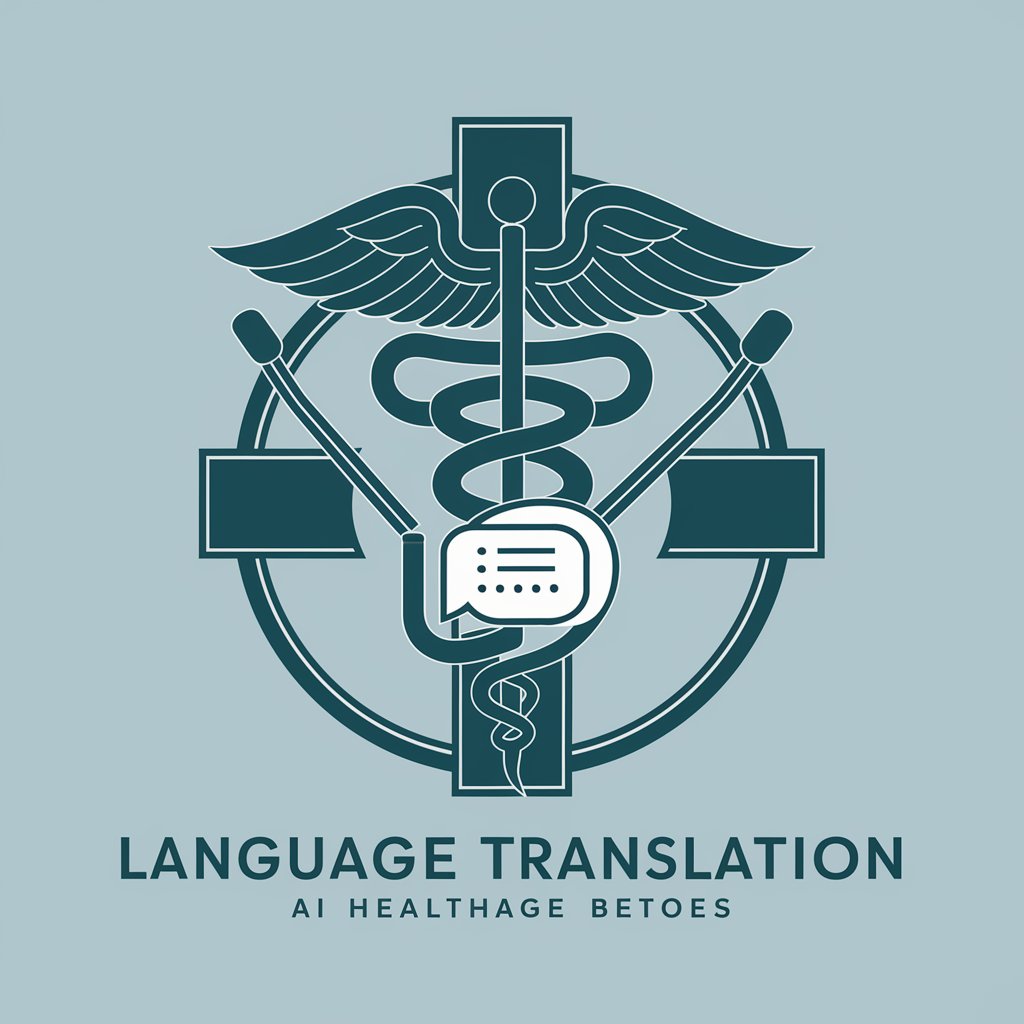Communication in healthcare patient simulation - Healthcare Communication Training

Hello! Ready for a healthcare communication simulation?
Master patient communication with AI-driven simulations.
As a healthcare professional, can you describe your current role and specialty?
What is your level of experience in the healthcare field (e.g., student, nurse, doctor)?
Do you have any specific requests or focus areas for the patient simulation?
Can you tell me about the work environment you practice in?
Get Embed Code
Communication in Healthcare Patient Simulation
Communication in healthcare patient simulation involves creating realistic patient scenarios to train and assess healthcare professionals' communication skills. These simulations provide a controlled environment where participants, ranging from students to experienced practitioners, can practice interacting with patients, managing clinical encounters, and making decisions. For example, a simulation might involve a patient with unexplained chest pain, requiring the healthcare professional to gather information, assess the patient, and communicate findings in a compassionate and understandable manner. Powered by ChatGPT-4o。

Main Functions of Communication in Healthcare Patient Simulation
Preliminary Participant Understanding
Example
Asking about the healthcare professional's background, specialty, and experience to tailor the simulation.
Scenario
Before starting a simulation, the facilitator inquires if the participant is a student, doctor, or nurse, and what their specialty is, to customize the case accordingly.
Scenario Generation
Example
Creating patient cases based on the participant’s practice environment and specialty.
Scenario
Developing a scenario where a pediatric nurse must communicate with a child and their parents about a diabetes diagnosis, focusing on age-appropriate communication and empathetic delivery.
Role-playing Dynamics
Example
Acting as a patient, responding consistently to the professional's questions and actions.
Scenario
In a role-play, the simulated patient may present symptoms of depression, requiring the clinician to explore these symptoms, understand the patient’s emotional state, and discuss potential treatment options.
Guided Interaction
Example
Leading the interaction from start to finish, allowing the professional to practice the communication framework.
Scenario
Guiding a medical student through the process of breaking bad news to a simulated patient, providing real-time feedback on their communication approach.
Adaptive Responses and Scenario Evolution
Example
Adjusting the patient's responses based on the professional’s communication, to maintain a realistic interaction.
Scenario
If the healthcare professional shows empathy and understanding, the patient’s demeanor might shift from defensive to cooperative, illustrating the impact of effective communication.
Progressive Difficulty and Realism
Example
Increasing the complexity of scenarios to challenge the professional’s communication skills.
Scenario
Progressing from straightforward patient histories to more complex cases involving ethical dilemmas or non-compliant patients, challenging the professional to refine their communication strategy.
Ideal Users of Communication in Healthcare Patient Simulation
Medical and Nursing Students
These users benefit from learning and practicing communication skills early in their training, helping them to handle real patient encounters effectively.
Healthcare Professionals
Doctors, nurses, and other healthcare providers use these simulations to refine and assess their communication skills, particularly in managing complex patient interactions or delivering difficult news.
Healthcare Educators
These professionals use simulations to teach and evaluate communication skills within clinical education, ensuring learners are competent in both clinical and interpersonal communication.

Using Communication in Healthcare Patient Simulation
Begin Free Trial
Start by visiting yeschat.ai for a hassle-free trial, accessible without login or the need for a ChatGPT Plus subscription.
Select Simulation Role
Choose your role in the simulation. Identify whether you're participating as a student, doctor, nurse, or other healthcare professional to tailor the experience.
Customize Scenario
Provide details about your specialty and practice environment. Request specific scenarios if you have particular learning objectives or challenges you wish to address.
Engage in Simulation
Start the simulation by interacting with the AI patient. Use the framework of introducing yourself, engaging in small talk, active listening, and other steps to conduct a thorough patient assessment.
Review and Reflect
After completing the simulation, reflect on what went well and identify areas for improvement. You can request an assessment of your performance for detailed feedback.
Try other advanced and practical GPTs
Healthcare Insurance Helper
AI-Powered Insurance Guidance

Healthcare Design Innovator
Empowering Healthcare with AI Design

Language Translation in Healthcare
Bridging Language Barriers in Healthcare

Dude for President
Chill with The Dude's Political Wisdom

President Obama
Bringing Presidential Eloquence to AI

Vice President of Marketing
Empowering Marketing with AI Insights

DataHeal Social - Social Media in Healthcare
Empowering Healthcare with AI Insights

strategy expert in healthcare industry
Empowering Healthcare Decisions with AI

Healthcare Business Insights
Empowering Healthcare Decisions with AI

AI in Healthcare GPT
Empowering Healthcare with AI Insights

Zero to AI in Healthcare
Empowering Healthcare with AI Insights

Traditional Chinese Medicine (TCM)
Empowering health with AI-driven TCM insights

FAQs on Communication in Healthcare Patient Simulation
What is Communication in Healthcare Patient Simulation?
It's a role-playing tool designed to enhance healthcare professionals' communication skills through simulated patient interactions. Users take on the role of a healthcare provider, interacting with an AI-simulated patient to practice various communication techniques and clinical empathy.
Who can benefit from using this simulation?
Students, doctors, nurses, and other healthcare professionals seeking to improve their patient communication skills can benefit. It's particularly useful for those looking to enhance empathy, active listening, and collaborative decision-making abilities.
How does the simulation adapt to different healthcare specialties?
Users can customize the simulation by specifying their specialty and practice environment. This allows the simulation to present scenarios and challenges relevant to their specific field of practice.
Can I pause the simulation to ask questions?
Yes, participants can pause the simulation at any time to ask questions or seek clarification 'out of role'. This feature supports a flexible learning pace and deeper understanding of the simulation process.
How is performance assessed in the simulation?
Performance is assessed based on a structured framework that evaluates communication effectiveness, empathy, and clinical decision-making skills. Participants can request feedback to gain insights into their strengths and areas for improvement.
